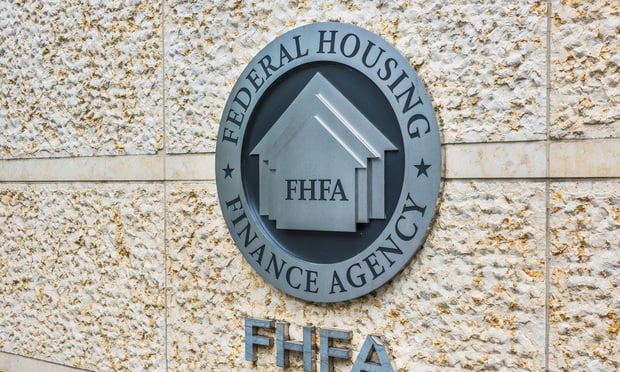
NEW YORK CITY—With nearly 10 times as much class A product under construction as there is in the workforce segment, the supply picture bodes well for post-2009 multifamily securitizations, says Kroll Bond Rating Agency. That's because nearly 80% of the $132.3 billion of multifamily loans that have been securitized since 2010 is collateralized by B and C product, where new construction has been “fairly muted,” KBRA says.
As of the first quarter, approximately 440,000 high-rent apartment units were under construction, representing 15.5% of total class A inventory. In the workforce segment, about 46,000 new units—or 1.1% of the total inventory for classes B and C—were underway.
“The proportion of the two segments' construction activity may be contributing to the widening vacancy gap between them,” according to KBRA. Workforce apartments' vacancy rate of 5.4% as of Q1 was “meaningfully below” the high-rent vacancy rate of 9.1%. “Just a few years ago, in 2012, the gap was only three basis points”—i.e. 5.9% workforce, 6.2% high rent.
Citing recent quarterly reports from the National Multifamily Housing Council, KBRA notes that as new apartments have been completed, particularly in the class A tier, “the net positive demand-and-supply balance that had existed for some time has turned negative. Based on the July 2017 report, this is the seventh consecutive quarter of softening conditions for the market tightness index. The index this year has been at levels not seen since the Great Recession.”
Although the balance between supply and demand for workforce-priced product has been favorable on a national level, KBRA notes that local market conditions vary. To further examine the dynamics within individual markets, KBRA utilized various data points including employment, housing affordability, domestic and international migration, as well as demographic composition.
Along with these variables, the ratings agency also looked at inventory and construction levels, as well as current and historical vacancy rates. The information was used to derive a ranking system based on these supply and demand factors for 59 individual metropolitan statistical areas.
In total, collateral securing 5,428 underlying loans was present across the selected MSAs, with a total unpaid principal balance of approximately $86 billion. Individual rankings were assigned to the MSAs based on their relative market attractiveness using the individual supply and demand factors.
After stratifying the rankings, it was determined that about 34% of the aggregate securitized principal balance is situated in markets that KBRA designated as “top tier”—i.e. six to eight 6-8 positive attributes. These easily outweighed the 7% in the “bottom tier,” i.e. those with two or fewer positive attributes. The majority (59%) fell somewhere in between, although 23% was part of the lowest ranked mid-tier.
However, KBRA notes that this doesn't mean all class-B/C collateral will perform well. About 30% of the MSAs with securitized have a supply and demand mismatch, KBRA says. “Furthermore, while the other 70% appears to be better positioned, this cycle is long in the tooth, and past performance isn't necessarily indicative of future results,” according to KBRA.
And there's also a concern that class A oversupply could trigger concessions and prompt some class B renters to trade-up to higher rent units. However, KBRA notes that this may be mitigated by the 40% rent premium between the two segments at the national level ($1,734 high rent versus $1,235 workforce). The ratings agency says that since '10, there have been 346 Freddie Mac K-Series transactions totaling $107.9 billion, along with $24.6 billion in CMBS conduit transactions backed by multifamily assets.

As of the first quarter, approximately 440,000 high-rent apartment units were under construction, representing 15.5% of total class A inventory. In the workforce segment, about 46,000 new units—or 1.1% of the total inventory for classes B and C—were underway.
“The proportion of the two segments' construction activity may be contributing to the widening vacancy gap between them,” according to KBRA. Workforce apartments' vacancy rate of 5.4% as of Q1 was “meaningfully below” the high-rent vacancy rate of 9.1%. “Just a few years ago, in 2012, the gap was only three basis points”—i.e. 5.9% workforce, 6.2% high rent.
Citing recent quarterly reports from the National Multifamily Housing Council, KBRA notes that as new apartments have been completed, particularly in the class A tier, “the net positive demand-and-supply balance that had existed for some time has turned negative. Based on the July 2017 report, this is the seventh consecutive quarter of softening conditions for the market tightness index. The index this year has been at levels not seen since the Great Recession.”
Although the balance between supply and demand for workforce-priced product has been favorable on a national level, KBRA notes that local market conditions vary. To further examine the dynamics within individual markets, KBRA utilized various data points including employment, housing affordability, domestic and international migration, as well as demographic composition.
Along with these variables, the ratings agency also looked at inventory and construction levels, as well as current and historical vacancy rates. The information was used to derive a ranking system based on these supply and demand factors for 59 individual metropolitan statistical areas.
In total, collateral securing 5,428 underlying loans was present across the selected MSAs, with a total unpaid principal balance of approximately $86 billion. Individual rankings were assigned to the MSAs based on their relative market attractiveness using the individual supply and demand factors.
After stratifying the rankings, it was determined that about 34% of the aggregate securitized principal balance is situated in markets that KBRA designated as “top tier”—i.e. six to eight 6-8 positive attributes. These easily outweighed the 7% in the “bottom tier,” i.e. those with two or fewer positive attributes. The majority (59%) fell somewhere in between, although 23% was part of the lowest ranked mid-tier.
However, KBRA notes that this doesn't mean all class-B/C collateral will perform well. About 30% of the MSAs with securitized have a supply and demand mismatch, KBRA says. “Furthermore, while the other 70% appears to be better positioned, this cycle is long in the tooth, and past performance isn't necessarily indicative of future results,” according to KBRA.
And there's also a concern that class A oversupply could trigger concessions and prompt some class B renters to trade-up to higher rent units. However, KBRA notes that this may be mitigated by the 40% rent premium between the two segments at the national level ($1,734 high rent versus $1,235 workforce). The ratings agency says that since '10, there have been 346
Want to continue reading?
Become a Free ALM Digital Reader.
Once you are an ALM Digital Member, you’ll receive:
- Breaking commercial real estate news and analysis, on-site and via our newsletters and custom alerts
- Educational webcasts, white papers, and ebooks from industry thought leaders
- Critical coverage of the property casualty insurance and financial advisory markets on our other ALM sites, PropertyCasualty360 and ThinkAdvisor
Already have an account? Sign In Now
*May exclude premium content© 2025 ALM Global, LLC, All Rights Reserved. Request academic re-use from www.copyright.com. All other uses, submit a request to [email protected]. For more information visit Asset & Logo Licensing.








